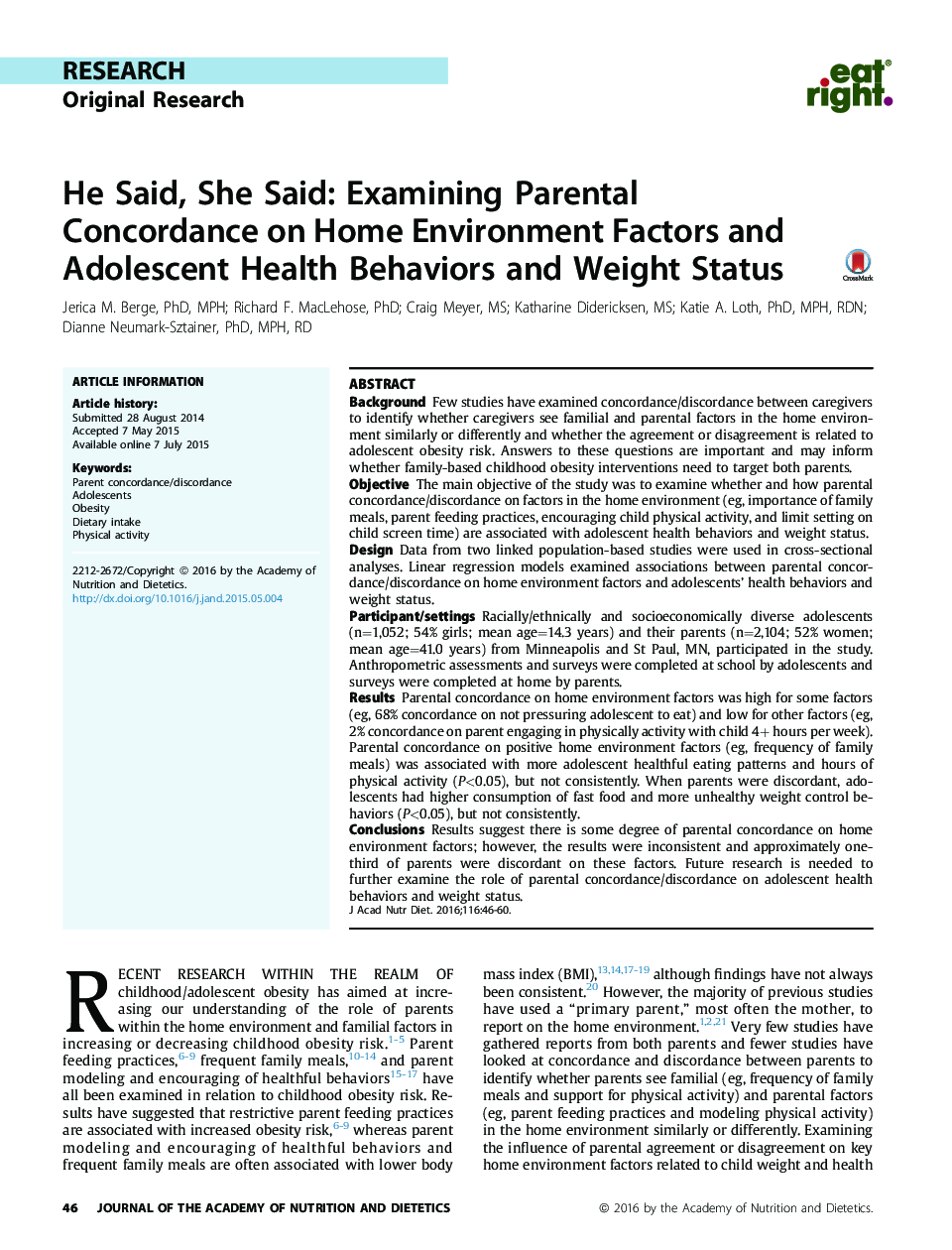| Article ID | Journal | Published Year | Pages | File Type |
|---|---|---|---|---|
| 2656475 | Journal of the Academy of Nutrition and Dietetics | 2016 | 15 Pages |
BackgroundFew studies have examined concordance/discordance between caregivers to identify whether caregivers see familial and parental factors in the home environment similarly or differently and whether the agreement or disagreement is related to adolescent obesity risk. Answers to these questions are important and may inform whether family-based childhood obesity interventions need to target both parents.ObjectiveThe main objective of the study was to examine whether and how parental concordance/discordance on factors in the home environment (eg, importance of family meals, parent feeding practices, encouraging child physical activity, and limit setting on child screen time) are associated with adolescent health behaviors and weight status.DesignData from two linked population-based studies were used in cross-sectional analyses. Linear regression models examined associations between parental concordance/discordance on home environment factors and adolescents’ health behaviors and weight status.Participant/settingsRacially/ethnically and socioeconomically diverse adolescents (n=1,052; 54% girls; mean age=14.3 years) and their parents (n=2,104; 52% women; mean age=41.0 years) from Minneapolis and St Paul, MN, participated in the study. Anthropometric assessments and surveys were completed at school by adolescents and surveys were completed at home by parents.ResultsParental concordance on home environment factors was high for some factors (eg, 68% concordance on not pressuring adolescent to eat) and low for other factors (eg, 2% concordance on parent engaging in physically activity with child 4+ hours per week). Parental concordance on positive home environment factors (eg, frequency of family meals) was associated with more adolescent healthful eating patterns and hours of physical activity (P<0.05), but not consistently. When parents were discordant, adolescents had higher consumption of fast food and more unhealthy weight control behaviors (P<0.05), but not consistently.ConclusionsResults suggest there is some degree of parental concordance on home environment factors; however, the results were inconsistent and approximately one-third of parents were discordant on these factors. Future research is needed to further examine the role of parental concordance/discordance on adolescent health behaviors and weight status.
